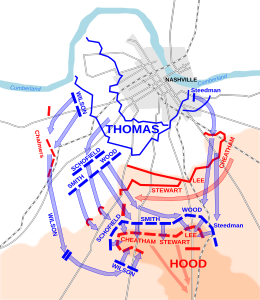
Battery E, 1st Illinois Light Artillery Regiment was an artillery battery that served in the Union Army during the American Civil War. It played a minor but noteworthy role in the Battle of Shiloh, and was mentioned in General William T. Sherman's after-action report on the battle. It also served at Vicksburg, Brice's Crossroads, Nashville and in several other engagements in the Western Theater of the war.

Battery D, 1st Illinois Light Artillery Regiment was an artillery battery from the state of Illinois that served in the Union Army during the American Civil War. The battery was authorized in July 1861 at Cairo, Illinois. The unit fought at Fort Donelson and Shiloh in 1862, Port Gibson, Raymond, Jackson, Champion Hill, and Vicksburg in 1863, and Meridian, Atlanta, and Nashville in 1864. The battery was mustered out of Federal service in July 1865.
Battery "M" 4th Regiment of Artillery was a light artillery battery that served in the Union Army during the American Civil War.
The 154th Regiment, Tennessee Infantry was an infantry regiment from Tennessee that served with the Confederate States Army in the American Civil War. Raised originally in 1842 as the 154th Tennessee Militia it sought to retain its number and was as such also known as 154th (Senior) Tennessee Infantry . Consolidating with the 13th Tennessee Infantry Regiment in March 1863 it was known as 13th-154th Tennessee Infantry Regiment; and had a number of temporary field consolidations until it was finally merged into the 2nd Consolidated Tennessee Infantry on April 9, 1865. The regiment surrendered with the remnants of the Army of Tennessee at Bennett Place on April 26, 1865.
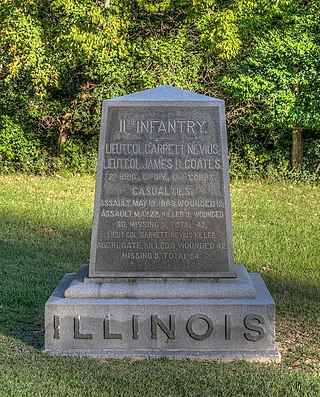
The 11th Regiment Illinois Volunteer Infantry was an infantry regiment from Illinois that served in the Union Army during the American Civil War. In April 1861, it was formed as a three-month volunteer unit, and in July 1861 it was reorganized as a three-year unit, in which role it served until the end of the war. Two of its commanding officers were promoted to brigadier general and led major units during the war. In its first major action at Fort Donelson the regiment suffered terrible losses. The 11th Illinois also fought at Shiloh, Riggins Hill, Vicksburg, First Yazoo City, Second Yazoo City, and Fort Blakeley. In April 1863, the 109th Illinois Infantry Regiment was disbanded and its enlisted men transferred into the 11th Illinois. The regiment was mustered out of service in July 1865.

The 9th Texas Infantry Regiment was a unit of Confederate States Army infantry volunteers organized in December 1861 that fought during the American Civil War. The regiment fought at Shiloh, Perryville, and Stones River in 1862, Chickamauga in 1863, the Atlanta Campaign, Allatoona, and Nashville in 1864, and Spanish Fort and Fort Blakeley in 1865. The remaining 87 officers and men surrendered to Federal forces in May 1865. Two of the regiment's commanding officers were promoted brigadier general.

The 2nd U.S. Artillery, Battery E was an artillery battery that served in the Union Army during the American Civil War. The unit fought at the battles of First Bull Run in 1861 and Yorktown, the Seven Days, Second Bull Run, Chantilly, Antietam, and Fredericksburg in 1862. The following year, Battery E moved to the Western Theater where it served at Vicksburg and Knoxville. In 1864, the unit transferred back to the Eastern Theater where it fought at the Wilderness, Spotsylvania, Totopotomoy, and Cold Harbor. For the rest of the war, it became part of the Washington D.C. garrison.

Battery B, 1st Missouri Light Artillery Regiment, also known as Welfley's Independent Missouri Battery, was an artillery battery that served in the Union Army during the American Civil War. Organized in September 1861, Welfley's Independent Battery fought at Pea Ridge and in the White River campaign. After its name changed to Battery B, 1st Missouri in December 1862, it fought at Cape Girardeau, Chalk Bluff, Vicksburg, Sterling's Plantation, and Brownsville. In September 1864, the unit ceased to exist when it was consolidated with three other Missouri batteries while stationed at New Orleans.
Battery C, 1st Missouri Light Artillery Regiment, also known as Mann's Independent Missouri Battery, was an artillery battery that served in the Union Army during the American Civil War. Organized between November 1861 and February 1862, Mann's Independent Battery fought at Shiloh and in the Corinth siege. After its name changed to Battery C, 1st Missouri in August 1862, it fought at Hatchie's Bridge, the Vicksburg campaign, the Meridian campaign, and the Atlanta campaign. In November 1864, the battery was assigned to the Nashville garrison; it remained there until it was mustered out in July 1865.
Battery D, 1st Missouri Light Artillery Regiment was an artillery battery that served in the Union Army during the American Civil War. Organized before February 1862, Battery D fought at Fort Henry, Fort Donelson, Shiloh, Corinth siege, Corinth, and Missionary Ridge. After serving in the Knoxville campaign, the battery garrisoned Huntsville, Alabama until April 1865. At that time it was consolidated with Battery C, 1st Missouri Light Artillery Regiment which was mustered out in July 1865.
Battery I, 1st Missouri Light Artillery Regiment, also known as Buel's Independent Missouri Battery, was an artillery battery that served in the Union Army during the American Civil War. Organized in July 1861, Buell's Independent Battery fought at Shiloh and in the Corinth siege. After its name changed to Battery I, 1st Missouri Light Artillery Regiment in August 1862, it fought at Corinth, in operations supporting Streight's Raid, at Resaca, and at Rome Cross Roads before being assigned to the Nashville garrison. It fought at the Battle of Nashville and was mustered out in June 1865.
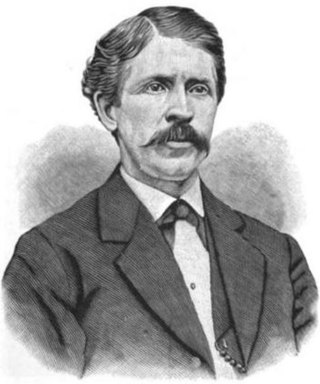
The Springfield Illinois Light Artillery, also known as Vaughn's Independent Illinois Battery or Battery A, 3rd Illinois Light Artillery, was an artillery battery from Illinois that served in the Union Army during the American Civil War. Organized in August 1862, the unit was first stationed at Bolivar, Tennessee. In August–September 1863 the battery participated in Frederick Steele's expedition to Little Rock, Arkansas, being engaged at Bayou Fourche. In spring 1864, the battery took part in the Camden Expedition, fighting at Prairie D'Ane and Jenkins' Ferry. The unit sat out the remainder of the war in Little Rock before being mustered out of service in June 1865.

Cogswell's Battery Illinois Light Artillery was an artillery battery from Illinois that served in the Union Army during the American Civil War. Organized in November 1861 as Company A, 53rd Illinois Infantry Regiment, it was detached as an independent artillery battery in March 1862. The battery participated in the Siege of Corinth in May 1862. The unit remained near Memphis, Tennessee until June 1863 when it was ordered to reinforce the Siege of Vicksburg. Cogswell's Battery took part in the Jackson Expedition, the Missionary Ridge and in the Knoxville campaign in 1863. After performing garrison duty for most of 1864, the unit fought at Nashville in December. In spring 1865, the battery fought at Spanish Fort and Fort Blakeley during operations against Mobile, Alabama. The battery was mustered out in August 1865.

Bridges' Battery Illinois Light Artillery was an artillery battery from Illinois that served in the Union Army during the American Civil War. Organized on 17 June 1861 as Company G, 19th Illinois Infantry Regiment, it was detached as an independent artillery battery on 14 January 1863. The battery fought in the Tullahoma campaign, at the battles of Chickamauga and Missionary Ridge, and in the Knoxville campaign in 1863. Bridges' Battery participated in the Atlanta campaign in 1864, fighting at Rocky Face Ridge, Resaca, Adairsville, Pickett's Mill, Kennesaw Mountain, Peachtree Creek, Atlanta, and Jonesboro. The unit fought at Franklin and Nashville shortly before it was renamed Battery B, 1st Illinois Light Artillery Regiment on 21 December 1864. It spent the rest of the war with the Nashville garrison and was mustered out in July 1865.

Battery E, 1st Missouri Light Artillery Regiment was an artillery battery unit from Missouri that served in the Union Army during the American Civil War. The 1st Missouri Light Artillery Regiment formed on 1 September 1861. The battery participated in Frémont's expedition to Springfield in October 1861. This was followed by actions at Prairie Grove and Van Buren in December 1862. The following year, the battery fought at Cape Girardeau, Chalk Bluff, Vicksburg, the Expedition to Morganza, Brownsville, and Fort Esperanza. After performing garrison duty at Brownsville, Texas, the unit was mustered out in June 1864. For a few months at the end of 1864, a Pennsylvania battery took the name of this unit.

Battery F, 1st Missouri Light Artillery Regiment was an artillery battery unit from Missouri that served in the Union Army during the American Civil War. The battery participated in operations in December 1861. Battery F fought at the battles of Prairie Grove and Van Buren in December 1862. The battery fought at Vicksburg, Brownsville, Mustang Island, and Fort Esperanza in 1863. The unit fought at Spanish Fort, and Fort Blakely in 1865. Battery F was mustered out on 11 August 1865.
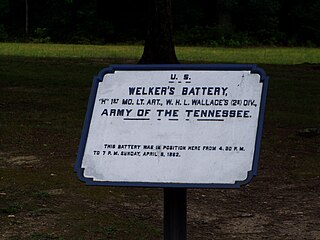
Battery H, 1st Missouri Light Artillery Regiment was an artillery battery unit from Missouri that served in the Union Army during the American Civil War. The 1st Missouri Light Artillery Regiment was created on 1 September 1861. Battery H fought at Fort Henry, Fort Donelson, Shiloh, 1st Corinth, and 2nd Corinth in 1862. The battery performed mostly garrison duty in 1863. The unit was in action in the Atlanta campaign and Sherman's March to the Sea in 1864 and in the Carolinas campaign in 1865. Battery H marched in the Grand Review of the Armies before being mustered out on 16 June 1865.

Battery K, 1st Illinois Light Artillery Regiment was an artillery battery from Illinois that served in the Union Army during the American Civil War. The battery was organized in January 1862 at Shawneetown and spent most of 1862–1863 on guard duty in western Kentucky. However, part of the battery participated in Grierson's Raid and the Siege of Port Hudson in 1863. The battery fought at Okolona, Tupelo, Spring Hill, and Franklin in 1864. The battery mustered out of Federal service in December 1864; new recruits and re-enlisted veterans transferred to Battery E, 1st Illinois Light Artillery Regiment.
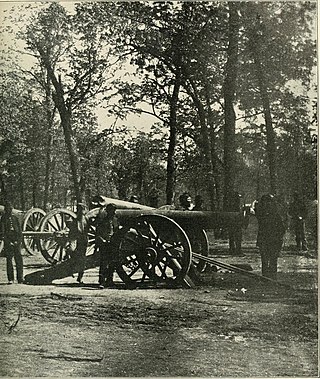
Battery B, 2nd Illinois Light Artillery Regiment was an artillery battery from Illinois that served in the Union Army during the American Civil War. The battery was organized in June 1861. It fought at Shiloh, First Corinth, and Second Corinth in 1862. Subsequently, the unit garrisoned Corinth, Mississippi, until January 1864. It was stationed at Memphis, Tennessee, until June 1864 when it fought at Brices Cross Roads. The battery garrisoned Memphis until it was mustered out in July 1865.
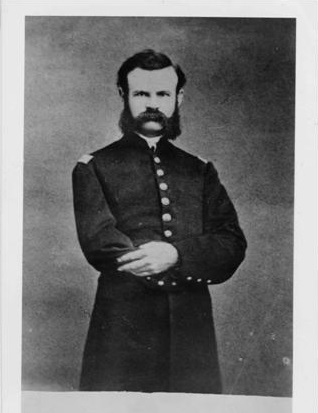
Battery F, 2nd Illinois Light Artillery Regiment was an artillery battery from Illinois that served in the Union Army during the American Civil War. The battery was organized in December 1861 at Cape Girardeau, Missouri. The unit fought at Shiloh, First Corinth, and Second Corinth in 1862 and at Vicksburg and Jackson in 1863. The battery served in the Atlanta campaign and at Nashville in 1864. It was mustered out of federal service in July 1865. The battery's first commander was John Wesley Powell who later led an exploration of the Grand Canyon.

